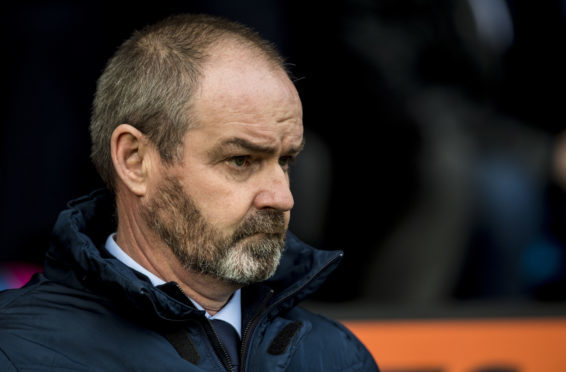Football management is a tough gig.
Ask Neil McCann or Csaba Laszlo how hard it is to find the formula for consistency. Yet, in Ayrshire, the man I said here weeks ago would be my choice for the Scotland job has his Kilmarnock side soaring skywards since becoming boss last October.
Steve Clarke is contender for manager of the season.
He took over with Killie rooted bottom of the Premiership, and looking like relegation fodder. His astute coaching and management skills have lifted them to fifth place, and resurrected the Rugby Park side.
Apart from a couple of additions, he’s achieved this with the same squad of players bequeathed by the previous boss.
While other managers bring in almost entirely new squads and still struggle for results, Clarke, who spent 30 years in England at the top level as a player at Chelsea, and as a coach at Newcastle, Chelsea, West Ham, Liverpool, and Aston Villa, has rebooted Kilmarnock organisationally and tactically.
He does what it says on the tin -he coaches, and he manages.
No public appeal to the board for cash for new faces, or bemoaning the paucity of the squad.
The Rugby park revolution has featured much the same personnel, but with the application of sound managerial nous, and experience, gleaned from working with some of the biggest names in football.
Kilmarnock are reinvigorated and renaissance is underway.
A win and a draw against champions Celtic, two wins and a draw against Rangers, shows the mental strength and robustness he’s inculcated in his team.
Motivational qualities aside, getting players to respond to instructions, so that they know exactly how they’re expected to perform their positional and tactical duties, is something which many managers struggle to achieve.
As manager, Clarke took West Bromwich Albion to eighth place, their highest ever English Premier league position, among the mega rich of English football. Now he is showing signs of achieving great success in Ayrshire.
Many tools are available to the modern manager – heart rate monitors, GPS to track the number and distances of runs made by players, video analysis, sports science, and sports psychology, to obtain maximum results from players’ minds and bodies.
All managers can use those tools, but many lack an intangible ingredient – the ability which the best bosses possess, to see and change things in players, and teams, on the coaching ground, and in the heat of the action, that lesser managers can’t, or don’t spot.
It might be a positional tweak, marking out an entirely different role for a player, or even just addressing an underlying domestic or personal issue which has been troubling someone.
It can be a myriad of minor things or one big bold thing.
The best managers possess the gift which others find elusive. Clarke is now propelling Kilmarnock to heights undreamt of when relegation seemed to be beckoning just a few months back.
Some other chairmen must surely look and wonder, as they see what a bit of bold vision has achieved, and wish they’d been smarter on the uptake when Clarke’s services were available.
Their loss is Kilmarnock’s undoubted gain.










